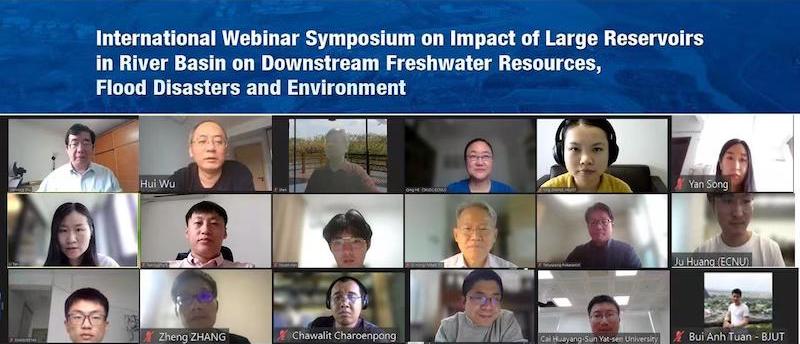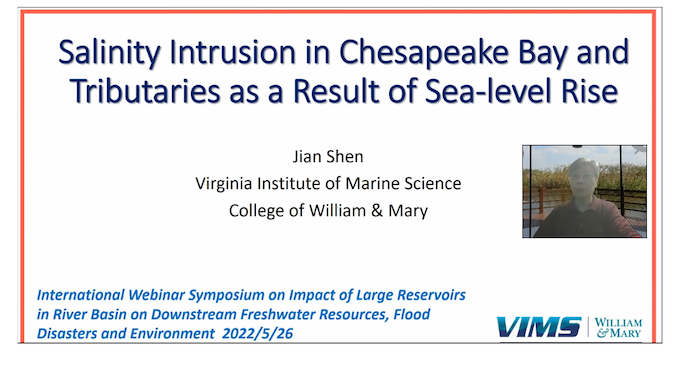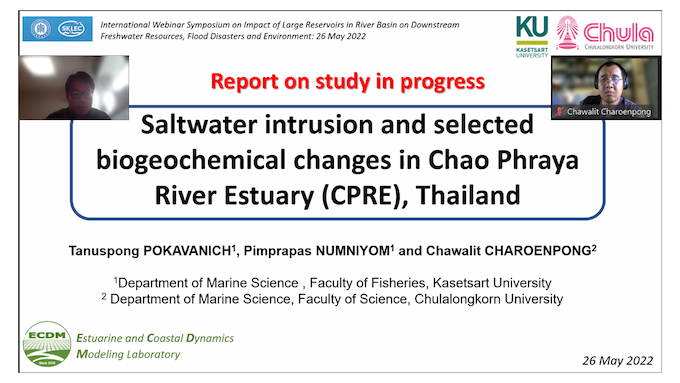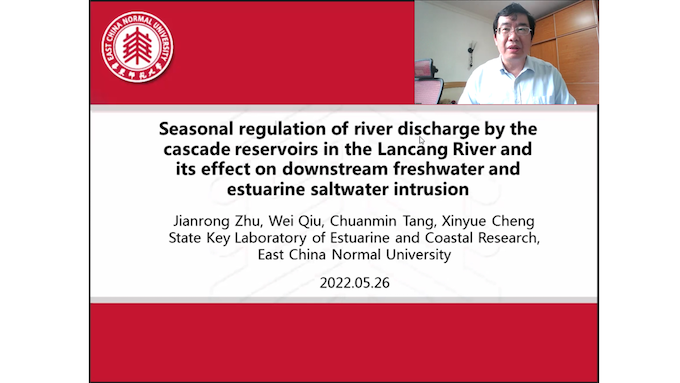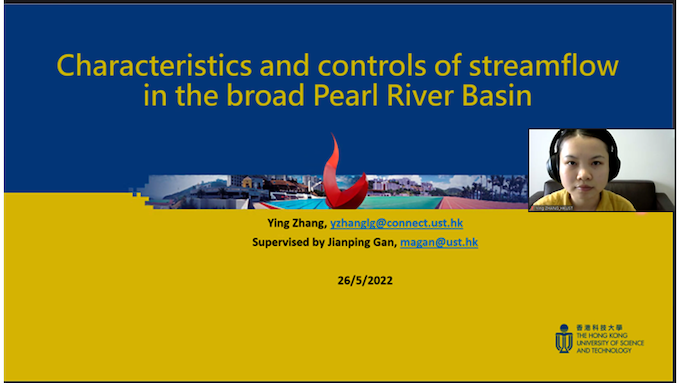The International Webinar Symposium on Impact of Large Reservoirs in River Basin on Downstream Freshwater Resources, Flood Disasters and Environment, hosted by the State Key Laboratory of Estuarine and Coastal Research (SKLEC), was held online on May 26, 2022. More than 40 scientists from China, Germany, the United States, Thailand, Vietnam and Japan attended this meeting. Prof. Jianrong Zhu chaired this symposium, and Prof. Qing He, the Director of the State Key Laboratory of Estuarine and Coastal Research, delivered a warmly welcome speech.
Prof. Qing He congratulated for the opening of the International Webinar Symposium on Impact of Large Reservoirs in River Basin on Downstream Freshwater Resources, Flood Disasters and Environment, and mentioned that there is a strong land-sea interaction in the estuarine and coastal areas, which is strongly affected by human activities. The reservoir construction in river basin, as the major impact, has changed the river discharge, sediment transport and riverine pollutants and nutrients which have a series of impacts on the downstream freshwater resources, flood disasters and environment. In response to this global key issue, Mega-Delta Program of UN Ocean Decade has the overall objective to support sustainable development in delta regions. It plans to study the present status of globe representative deltas system for new blueprints, including critical characteristics and the sustainability of delta system and their capacity to support regional development for delta systems which had different physical process, ecological and economic value. As the leading institute of Mega-Delta Program, the State Key Laboratory of Estuarine and Coastal Research in East China Normal University (ECNU) decided to hold this symposium aiming to promote understanding of the impact of large reservoirs on downstream Delta region to inform management off flooding risk, coastal erosion, saltwater intrusion, water quality and ecosystem. Therefore, this symposium is of great significance for the sustainable development of estuarine and coastal deltas.
The symposium conducted in-depth discussions on the reservoirs in river basins on downstream reaches around the world, including the Chesapeake Bay in the United States, the Chao Phraya River Estuary in Thailand, the Mekong River in Asia, and the Pearl River, Changjiang River and Yellow River in China. Prof. Jianrong Zhu, Prof. Leicheng Guo and Prof. Hui Wu together chaired this symposium.
For the Chesapeake Bay and tributaries in the United States, Prof. Jian Shen from the Virginia Institute of Marine Science of William & Mary reported the salinity intrusion, freshwater resource, marsh habitat and ecosystem under the sea level rise.
For the Chao Phraya River Estuary in Thailand, Prof. Tanuspong pokavanich and Dr. chawalit charoenpong from Kasetsart University reported the saltwater intrusion dynamics and its biogeochemistry impact.
For the Mekong River, Prof. Jianrong Zhu from the State Key Laboratory of Estuarine and Coastal Research of East China Normal University reported the seasonal regulation of river discharge by the cascade reservoirs in the Lancang river and its effect on downstream freshwater and estuarine saltwater intrusion.
For the broad Pearl river basin, Dr. Ying Zhang from The Hong Kong University of Science and Technology reported the spatiotemporal characteristics and controls of streamflow in the Pearl river basin.
For the Yellow River in China, Prof. Naishuang Bi from Ocean University of China reported that the processes of erosion and deposition in the downstream channel of the Yellow river have undergone significant changes on different timescales and the operation of the Xiaolangdi Dam was the main factor controlling the changes in the erosion and deposition of the downstream channel.
For the Changjiang river basin in China, six scholars from the world leading universities/research institutions conducted their reports. Prof. Huayang Cai from Sun Yat-sen University proposed a data-driven framework to quantify the impact of the Three Gorges Dam (TGD) on the alterations in the thermal and water level dynamics; Prof . Leicheng Guo from ECNU reported that high compound flood risk remains in the Changjiang Delta regions and TGD may help to mitigate flooding risk in the delta by optimized operation; Prof. Hui Wu from ECNU reported the lateral circulation among channels in the Changjiang river estuary and mega estuary construction changed the spatial pattern of algal blooming by regulating river plume and turbidity; Dr. Ju Huang from ECNU reported that the seasonal regulation of river discharge by the cascade reservoirs in the Changjiang river and its effects on downstream freshwater resources and estuarine saltwater intrusion; Dr. Yan Song form ECNU reported that the reservoir retention effect slows down the transport of biogenic elements to the sea; Dr. Xiaoqiang Liu from ECNU reported that dam interception has reduced the sediment supply into the Yangtze river tidal reach causing a change from deposition to erosion in the river bed.
Those talks attract great interests from audiences, and many questions and comments were raised from all over the world.
At the final session, Prof. Jianrong Zhu organized the discussion about the impact of large reservoirs on the downstream basin. Prof. Hui Wu from SKLEC, ECNU and others shared their respective views and possible pathways for the sustainable development of river delta region. In the end, Prof. Jianrong Zhu closed the symposium after a brief summary.

